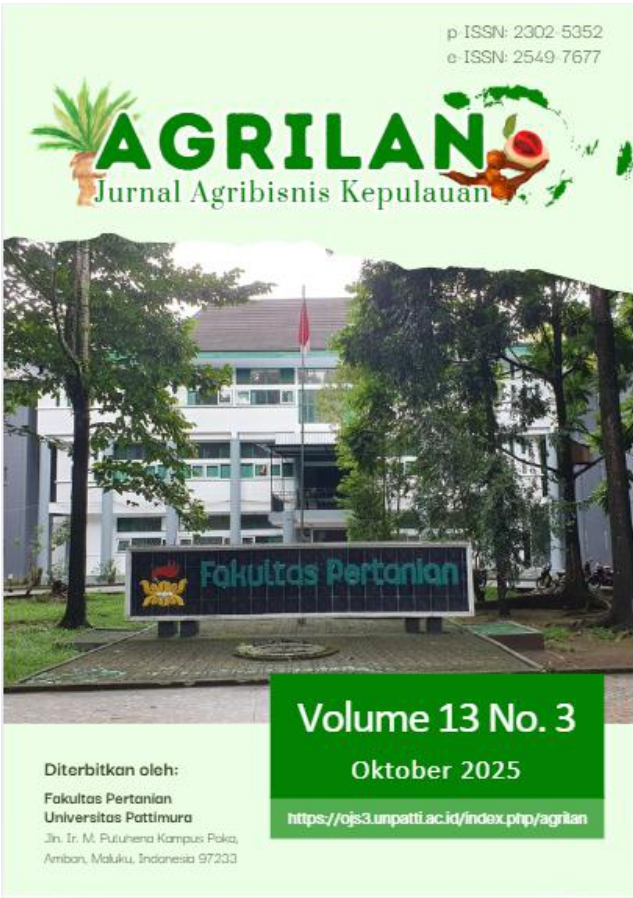Perbandingan Kelayakan Usahatani Padi Sawah dengan Penggunaan Benih Bersertifikat dan Tidak Bersertifikat
Abstract
This study aims to analyze the comparison of the feasibility of rice farming between the use of certified and non-certified seeds in West Seram Regency. The research method used was descriptive analytical, with the research location in Waihatu Village, Kairatu District, West Seram Regency. The number of respondents was 38 people, consisting of 19 certified seed farmers and 19 non-certified seed farmers, which were determined through purposive sampling techniques. The analysis instruments used include income analysis and feasibility analysis. The results of the study show that paddy rice farming, both using certified and non-certified seeds, both provides positive revenue and income. Both types of farming are also still feasible to be cultivated because the R/C and B/C values are greater than one. However, rice field farming that uses certified seeds has a higher productivity level compared to farming that uses non-certified seeds. Judging from the relatively different B/C values, rice farming with certified seeds has greater sustainability prospects and development opportunities


 n is distributed under
n is distributed under 